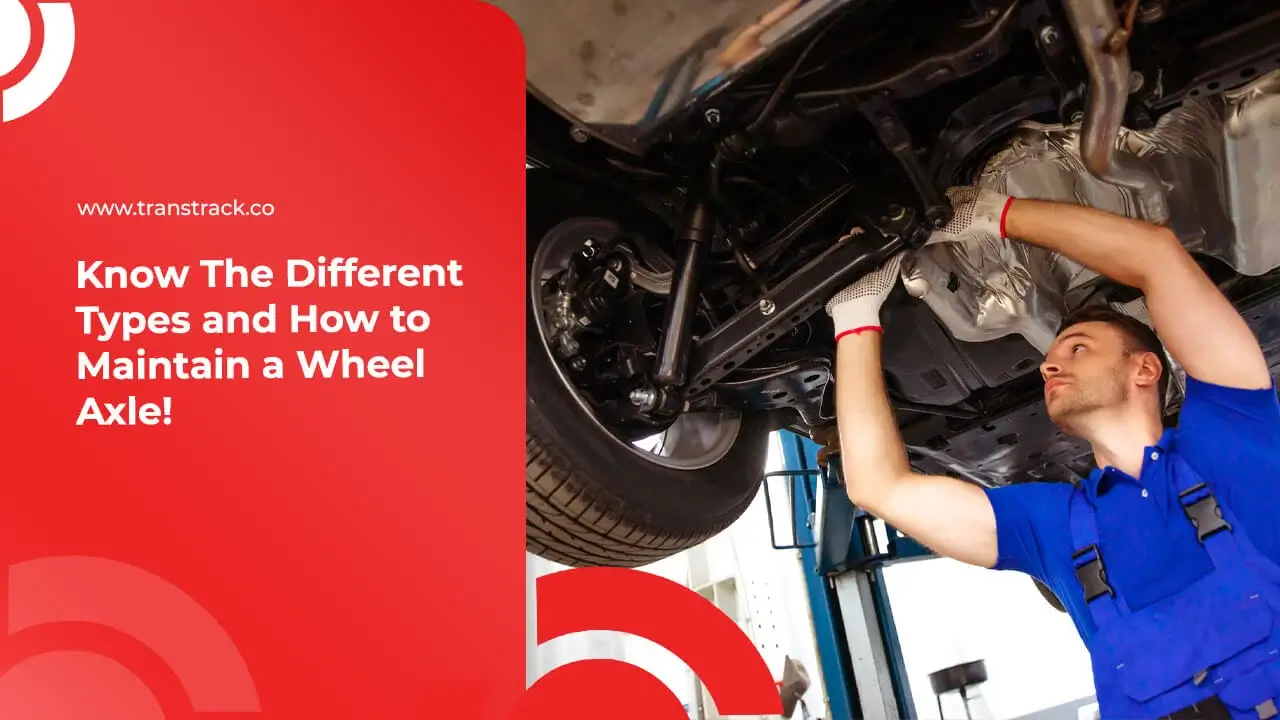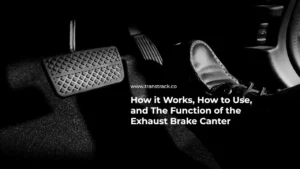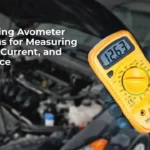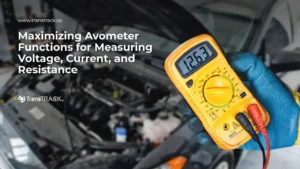Know the Different Types and How to Take Care of Wheel Axles!
Posted on July 3, 2024 by Nur Wachda Mihmidati

The wheel axles is one of the vital components in a vehicle that is often overlooked in maintenance. Serving as the center point of rotation for the wheels, it plays a key role in maintaining stability, control and overall vehicle performance. By understanding the types, functions, and how to maintain these axes, vehicle owners can ensure safe and comfortable driving. This article TransTRACK will take a closer look at wheel axles, including how to maintain them, potential problems that arise due to damage, and the importance of performing regular maintenance. Let’s explore more about this very important component.
What Are the Functions of a Wheel Axles on a Vehicle?
Wheel axles on vehicles have several important functions that play a role in vehicle performance, stability, and safety. Here are the main functions of this axis:
Supports Vehicle Weight
This component helps to bear and distribute the weight of the vehicle, including its cargo and passengers. This is one of the main functions of this component.
Provides a Rotation Point for the Wheel
This component serves as the center point of rotation for the wheels, allowing the wheels to rotate smoothly as the vehicle moves.
Transferring Power from the Engine to the Wheels
In vehicles with front-wheel drive or rear-wheel drive, the front or rear wheel axles transfer power from the engine to the wheels, allowing the vehicle to move forward or backward.
Supports Steering Function
In the front axle, particularly in vehicles with front-wheel drive or four-wheel drive, it also supports the steering system, allowing the front wheels to turn in accordance with the steering wheel rotation.
Maintains Vehicle Stability and Control
This component helps maintain vehicle stability by distributing weight evenly and ensuring that the wheels remain properly aligned, which is important for vehicle control and maneuvering.
Reduces Vibration and Shock
The axis component, together with the vehicle suspension, helps to dampen vibrations and shocks transmitted from the road to the vehicle body, providing greater ride comfort.
Supports the Brake System
This component is also the point where the brake system is attached, allowing the vehicle to slow down or stop safely.
These functions make this axle a crucial component in vehicle structure and operation. Proper maintenance of this component is essential to ensure optimal performance and driving safety.
Wheel Axles Types
There are several types used in vehicles, each with different characteristics and functions. The following are the types based on various factors:
Based on Location
Front Axle
- Solid Front Axle: Used in heavy and off-road vehicles for its strength. Both front wheels are connected by one solid axle.
- Independent Front Suspension (IFS): Each front wheel can move independently, providing better comfort and control.
Rear Axle
- Solid Rear Axle: Often found on trucks and heavy vehicles. Both rear wheels are connected by one solid axle.
- Independent Rear Suspension (IRS): Each rear wheel can move independently, improving traction and comfort.
Based on Drive
Driving Axle
- Front Driving Axle: Used in front-wheel drive (FWD) vehicles, transfers power from the engine to the front wheels.
- Rear Driving Axle: Used in rear-wheel drive (RWD) vehicles, transferring power from the engine to the rear wheels.
- All-Wheel Drive Axle: Used on vehicles with all-wheel drive (AWD) or four-wheel drive (4WD), transferring power to all wheels for maximum traction.
Non-Driving Axle
- Front Dead Axle: A front axis that does not transfer power, usually found on rear-wheel drive vehicles.
- Rear Dead Axle: A rear axis that does not transfer power, usually found on front-wheel drive vehicles.
Based on Structure
Solid Axle
- Rigid Design:The two wheels are connected by one solid axle. Strong and durable, suitable for heavy and off-road vehicles. Less comfortable and flexible on uneven road surfaces.
Independent Suspension
- Flexible Design: Each wheel is connected independently, allowing separate movement for each wheel. Provides better comfort and traction, but is more complex and expensive to maintain.
Based on Special Function
Load Bearing Axle
- Designed to bear the weight of the vehicle and its cargo. This type can be found on commercial vehicles such as trucks.
Steering Axle
- Used on the front wheels to support the steering function. Usually found on vehicles with two-wheel front drive or four-wheel drive systems.
Based on Special Applications
Tandem Axle
- Used on heavy vehicles such as large trucks, it has two wheel axes that work together to bear heavy loads.
Trailer Axle
- Used on trailers towed by the main vehicle. This axis is usually not involved in the movement but bears the load of the trailer’s cargo.
How to Maintain the Wheel Axis?
Regularly maintaining this component is an important step to ensure optimal vehicle performance and prevent serious damage. Here are some ways to maintain this component:
Routine Checkups
Regular checks are essential to detect problems with these components before they become more serious. Perform regular visual checks and listen for strange noises such as squeaking or rattling when the vehicle is running.
Proper Lubrication
Proper lubrication is essential to maintain the performance of these components and prevent wear and tear. Use the lubricant recommended by the manufacturer and follow the recommended lubrication schedule, especially if the vehicle is frequently used in rough conditions or off-road.
Bearing Replacement
Regular bearing replacement is an important part of maintaining these components. If you hear noise from the wheels or feel unusual vibrations, the bearings may be worn and need to be replaced.
Axle Shaft Inspection and Replacement
Perform a visual inspection of the axle shaft periodically to detect any cracks or damage. If the axle shaft has significant damage or wear, replace it immediately to prevent further damage to the axle and related components.
Additional Tips
Avoid driving the vehicle with loads that exceed capacity to prevent rapid wear on the axle and bearings. Keep these components clean and check seals and gaskets regularly to avoid lubricant leaks that could cause damage.
What Happens If the Wheel Axis is Damaged?
If this component is damaged, a variety of serious problems can occur with the vehicle, affecting performance, safety, and driving comfort. Here are some of the consequences in case of damage:
Wheel and Tire Damage
A damaged wheel axle can cause wheels and tires to wear unevenly or faster than normal. This can reduce the traction and stability of the vehicle, increasing the risk of a crash.
Control and Stability Issues
Damage to the wheel axes can cause the vehicle to become difficult to control, especially when cornering or driving on uneven roads. This can result in loss of control and increase the risk of an accident.
Noise and Vibration
A damaged axle often produces noise such as rattling or squeaking when the vehicle is moving. In addition, unusual vibrations may be felt through the steering wheel or vehicle body, which reduces driving comfort.
Damage to the Suspension System
Malfunctions can put additional load on the vehicle’s suspension system, which can cause further damage to suspension components such as the shock absorber and per.
Decreased Fuel Efficiency
Wheel misalignment due to a damaged wheel axle can increase rolling resistance, which in turn reduces the vehicle’s fuel efficiency.
Potential Brake System Failure
A damaged axle can affect the performance of the brake system, especially if the rear axle is damaged. This can reduce the vehicle’s ability to stop safely, increasing the risk of an accident.
High Repair Costs
If damage to the wheel axle is not repaired immediately, it may cause damage to other components such as bearings, transmission shafts, and suspension systems. This can result in high repair costs.
Its breakdown can lead to various serious problems affecting performance, safety and driving comfort. Therefore, it is imperative to perform regular maintenance and proper inspection. Visual inspection, proper lubrication, periodic bearing replacement, and axle shaft inspection are important steps in keeping the wheel axle in optimal condition.
To ensure your vehicle maintenance is done efficiently and on time, we recommend using TransTRACK’s Vehicle Maintenance System. With this system, you can manage your maintenance schedule, get automatic reminders for routine servicing, and monitor your vehicle’s condition in real-time. Don’t let wheelbase damage interfere with your activities and safety on the road.
Immediately use the Vehicle Maintenance System from TransTRACK and enjoy the convenience of keeping your vehicle in top shape!
Topic :
Recommended Articles

 Bahasa Indonesia
Bahasa Indonesia








